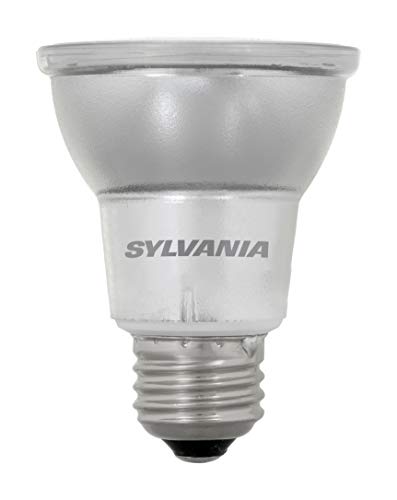10 Best Natural Light Light Bulbs - Buyer’s Guide | SHR
Abiodun Ayomide Jan 7, 2026 1:58 PM
When it comes to lighting your home, natural light is always the best option. However, not all homes have an abundance of natural light, which is where natural light light bulbs come in. Natural light bulbs are designed to mimic the color temperature and brightness of natural light, providing a similar effect without the need for windows. But with so many options on the market, it can be difficult to know which natural light bulbs to choose. In this blog post, we'll explore what to consider when buying natural light light bulbs.
What to consider to buy the natural light light bulbs
Color Temperature
The color temperature of a light bulb is measured in Kelvins (K) and refers to the color of the light emitted. Natural light bulbs typically have a color temperature of 5000K to 6500K, which is similar to the color temperature of daylight. This color temperature provides a bright, white light that is great for task lighting and creating a clean, crisp look in a room.
Brightness
The brightness of a light bulb is measured in lumens (lm) and refers to the amount of light emitted. When choosing natural light bulbs, it's important to consider the brightness you need for the room you're lighting. A bulb that's too dim will not provide enough light, while a bulb that's too bright can be harsh and uncomfortable. As a general rule, aim for around 800 to 1100 lumens for a 60-watt equivalent bulb, and around 1600 to 2200 lumens for a 100-watt equivalent bulb.
Energy Efficiency
Energy efficiency is an important consideration when buying any type of light bulb. Natural light bulbs are available in a range of energy-efficient options, including LED, CFL, and halogen. LED bulbs are the most energy-efficient and can last up to 25,000 hours, making them a cost-effective option in the long run. CFL bulbs are also energy-efficient but contain small amounts of mercury, which can be harmful if not disposed of properly. Halogen bulbs are less energy-efficient but can provide a brighter light and are often cheaper to purchase upfront.
Dimmability
If you plan on using your natural light bulbs with a dimmer switch, it's important to choose bulbs that are dimmable. Not all natural light bulbs are dimmable, so be sure to check the packaging before making your purchase. Dimmable bulbs will typically have "dimmable" listed on the packaging or the bulb itself.
CRI (Color Rendering Index)
The Color Rendering Index (CRI) is a measure of how accurately a light source can reproduce colors. Natural light bulbs typically have a CRI of 80 or above, which means they provide a high level of color accuracy. This is important if you're using the bulbs for task lighting, such as in a kitchen or bathroom, where accurate color reproduction is essential.
Brand and Price
Finally, it's worth considering the brand and price of the natural light bulbs you're considering. While cheaper bulbs may seem like a good deal upfront, they may not last as long or be as energy-efficient as more expensive options. It's also worth considering the reputation of the brand you're buying from, as well as any warranties or guarantees they offer.
Read More:
The Best Led Light For Bedroom of 2025 I SHR
Best Modern Floor Lamp Reviews & Buyers Guide in 2025
10 Best Standing Lamps We've Tested 2025: Top Rated
10 Best Ikea Lamps in 2025: Reviews With FAQs
10 Best Floor Lamp To Light Up A Room We've Tested: Top Rated
- 9.9
- BrandLEDVANCE
- 9.8
- BrandLUXRITE
- Prime
- 9.7
- BrandLEDVANCE
- Prime
- 9.6
- Brandhansang
- Prime
- 9.2
- Brandcomzler
- Prime
- 9.1
- Brandwinshine
- Prime
- 9.0
- BrandBoRccdit
- Prime
- 8.6
- BrandNeporal
- Prime
- 8.4
- BrandNeporal
- Prime
- 8.3
- BrandCotanic
- Prime
Last update on 2026-01-07 / Affiliate links / Images, Product Titles, and Product Highlights from Amazon Product Advertising API
LED Lighting
Light-emitting diode (LED) bulbs use far less energy than any other type of incandescent bulb. They use up to 80% less power than regular incandescent bulbs but can last as long as 25,000 hours longer than regular bulbs. In general, you can change the color temperature and most LED lamps can be dimmed. They are a safer and more environmentally friendly option because they do not contain mercury.
LED Light Bulbs
Alternatives to incandescent bulbs that save energy include CFLs (compact fluorescent light bulbs). They can outlast incandescent bulbs by up to ten times as long while using significantly less power. Some compact fluorescent lamps (CFLs) have variable color temperatures and dimming capabilities. However, they do contain low levels of mercury and constitute a threat if not disposed of properly.
LED vs. Halogen
Using halogen gas improves the performance of an incandescent halogen lamp. They save more energy than regular incandescent bulbs but less than compact fluorescent or LED bulbs. Halogen bulbs last longer and give a brighter, whiter light than traditional incandescent bulbs. They can usually be turned down as well.
Light Bulbs Covering the Entire Color Spectrum
The spectrum of full-spectrum bulbs is designed to mimic that of daylight as precisely as possible. Their output encompasses the entire visible spectrum, including all the colors of the rainbow. Photographic studios and people suffering from seasonal affective disorder (SAD) are two common places where full-spectrum lighting is used.
daytime lighting
Daylight bulbs are engineered to emit a dazzling white glow, much like the sunlight they mimic. They are effective task lights and can supplement artificial illumination where none exists. Daylight bulbs typically have a color temperature between 5000K and 6500K.
In conclusion, it's crucial to take into account brand, price, dimmability, CRI, brightness, energy efficiency, and color temperature when purchasing natural light light bulbs.You'll be able to choose natural light bulbs that satisfy your lighting demands while being affordable and energy-efficient by taking these factors into account.





























